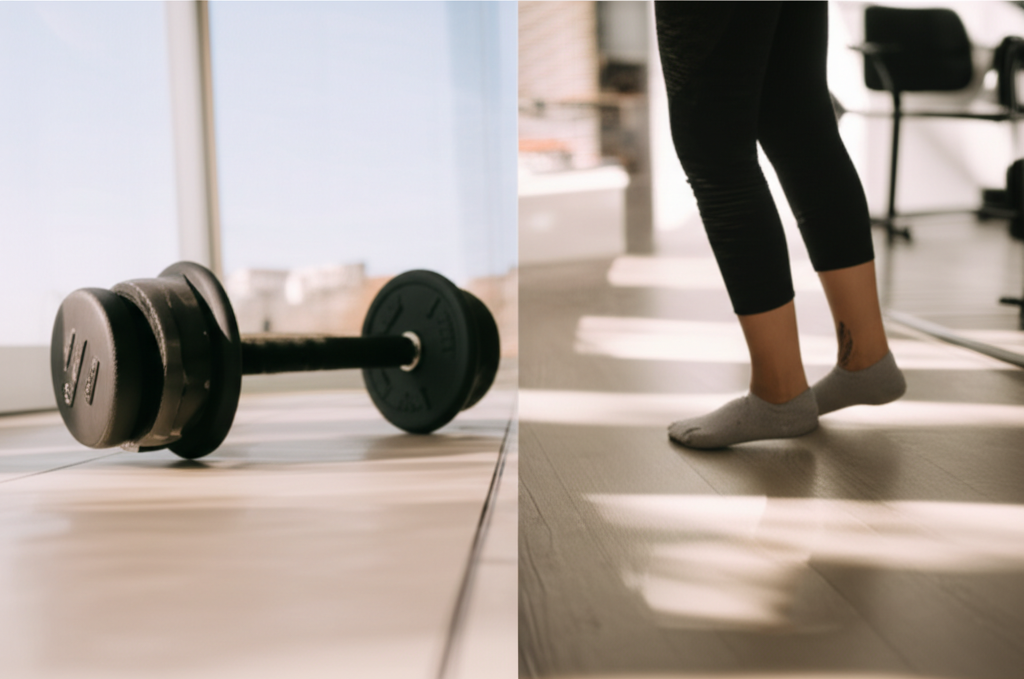Stuck in a fitness rut, performing the same exercises week after week, hoping for new results? You’re not alone. Many individuals fall into the trap of routine, believing consistency alone will drive progress. However, while consistency is crucial, varying your workout routine matters far more than you might think for continuous improvement, preventing injury, and maintaining motivation. Your body is an incredibly adaptable machine, and without new stimuli, it quickly learns to optimize for the tasks you repeatedly ask it to do, leading to stalled progress and a host of other downsides.

Understanding Muscle Adaptation and the Dreaded Plateau
One of the primary reasons to change your workout routine is to combat muscle adaptation and overcome workout plateaus. When you perform the same exercises at the same intensity and volume over an extended period, your body becomes incredibly efficient at those movements. This efficiency, while seemingly good, means your muscles are no longer being adequately challenged, and the physiological stress required for further growth, strength gains, or calorie burning diminishes.
A workout plateau is when you stop seeing progress in your fitness routine despite consistent effort. For instance, if your goal is to lift heavier or gain muscle, you can hit a plateau when your current routine no longer provides the necessary challenge to stimulate adaptation. Your muscles adapt by becoming stronger and more efficient, but without increasing the demand, further improvements cease.

Key Benefits of Varying Your Exercise Routine
Beyond breaking plateaus, diversifying your workouts offers a multitude of physical and mental advantages.
Preventing Overuse Injuries
Repetitive strain on the same muscles, joints, and ligaments can lead to overuse injuries like tendonitis, shin splints, or muscle strains and sprains. By incorporating different activities and movements, you distribute the workload across various muscle groups, allowing specific areas to rest and recover, thereby significantly reducing the risk of injury.
Building Well-Rounded Fitness and Targeting New Muscles
Sticking to one type of exercise often neglects other crucial aspects of fitness. Regularly changing your routine ensures you engage multiple muscle groups in new and challenging ways, promoting balanced development. This can lead to increased muscle mass, strength, endurance, and improved coordination. For example, if you primarily focus on cardio, you might miss out on the benefits of strength and balance training.
Combating Workout Boredom and Boosting Motivation
Monotony is a significant barrier to long-term adherence to an exercise program. Doing the same workout day in and day out can quickly become repetitive and monotonous, leading to a loss of interest and motivation. Introducing new exercises, environments, or even entirely different forms of activity keeps your mind engaged and workouts enjoyable, making it easier to stick to your fitness goals.
Enhancing Mental Health and Cognitive Function
Exercise is well-known for its mental health benefits, reducing stress and improving mood by releasing endorphins and other neurochemicals. Learning new skills and movements through varied workouts can further stimulate your brain, improving memory, coordination, and overall cognitive function. Challenging your body in new ways keeps your brain sharp and helps prevent cognitive decline.

How to Effectively Change Your Workout Routine
While the benefits are clear, knowing how and when to change your routine is key. Experts generally recommend adjusting aspects of your workout plan every 4 to 6 weeks to prevent plateaus and encourage progress. For beginners, a longer period of 6-12 weeks with the same routine might be beneficial to establish proper form and a foundational strength.
Here are several effective strategies for varying your workouts:
Implement Progressive Overload
Progressive overload is the gradual increase in stress placed upon the musculoskeletal and nervous system over time. This is a fundamental principle for continuous improvement in strength and muscle growth. It can be achieved in various ways:
- Increase Weight/Resistance: Gradually lift heavier weights or increase resistance.
- Increase Repetitions or Sets: Perform more reps or sets for a given exercise.
- Increase Time Under Tension: Slow down the movement during an exercise to keep muscles engaged longer.
- Decrease Rest Time: Shorten the recovery periods between sets or exercises to increase intensity.
- Increase Workout Frequency: Add an extra workout day to target muscle groups more often.
- Increase Range of Motion: Perform exercises through a greater range of motion, such as deficit deadlifts.
Vary Exercise Selection
Instead of overhauling your entire routine, try swapping out specific exercises for variations that target the same muscle groups in a slightly different way. For example:
- Squat Variations: Replace standard squats with goblet squats, sumo squats, or Bulgarian split squats.
- Push-up/Bench Press Variations: Try incline or decline bench presses, or different push-up forms.
- Cardio Diversity: If you usually run, try cycling, swimming, rowing, or hiking to engage different muscles and cardiovascular systems.
Change Workout Modalities
Incorporate different types of exercise into your weekly schedule:
- Cardiovascular Exercise: Running, swimming, cycling, or high-intensity interval training (HIIT).
- Strength Training: Weightlifting, bodyweight exercises, or resistance band training.
- Flexibility and Balance: Yoga, Pilates, or specific balance drills.
- Functional Training: Exercises that mimic everyday movements to improve overall capability.
Adjust Intensity and Volume
Periodization, which involves routinely changing exercise intensity, volume, or frequency, has been shown to be more effective for building muscle strength. You can cycle between periods of higher intensity/lower volume and lower intensity/higher volume. Incorporating high-intensity interval training (HIIT) can also challenge your cardiovascular system and boost metabolism.
Conclusion
While consistency forms the bedrock of any successful fitness journey, embracing variety in your workout routine is the catalyst for continued progress and holistic well-being. By understanding muscle adaptation, proactively preventing plateaus, mitigating injury risks, and keeping your mind engaged, you unlock greater physical gains and sustain a more enjoyable and effective fitness lifestyle. Don’t let your body get too comfortable; challenge it, change it, and watch yourself thrive.







